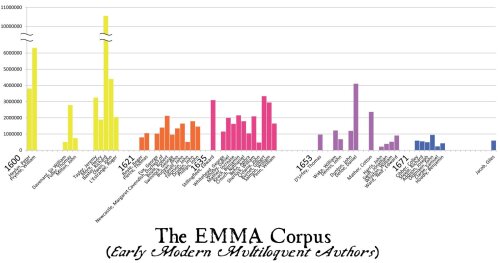Framework and methodology
The approach is constructionist (Goldberg 1995, 2006, Croft 2001), seeing grammatical items as form-meaning combinations that are interconnected in a complex associative network. Assuming that it is speakers that change language, the aim is to measure these influences at the level of individual mental grammars. Influence may be detected by comparing individual grammars as static units. Crucially, however, a second main objective is to examine whether grammatical changes also occur within an individual’s lifetime.
Studies on language change in living adults so far have been small-scale. Data for a single informant rarely go beyond the size of one short novel, which would only produce a handful of examples of relevant grammatical structures. To solve this, the novel data the project exploits come from the minds of dead people. Specifically, Mind-Bending Grammars compiled the 90 million word corpus EMMA (Early Modern Multiloquent Authors). EMMA is a sample of 50 of the most productive writers who were born in the 17th century, mostly taken from the London-based elite. The corpus draws on massive digitalization projects such as EEBO and 18thConnect, which cover all available English printed matter between 1473-1800. The sheer size of EMMA makes it possible to trace grammatical developments in detail across single lifetimes as well as five different generations (represented by the five colours in the graph below). Moreover, to ensure server-based, central and synchronized handling of the corpus analysis, the innovative corpus suite Cosycat has been developed (currently in alpha).
Click image for larger version
